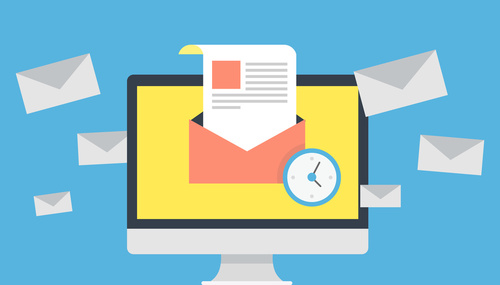A question frequently asked by small businesses getting their digital marketing started is, “How often should I email my clients?” Like most things in life, there’s no simple answer to this seemingly straightforward question.
Each company will have a unique email marketing frequency that works for them.
If you keep bombarding your email list with emails, whether promotional or non-promotional, your subscriber list will begin to shrink at a rapid pace. In fact, 69 percent users unsubscribe due to “too many emails.”
Knowing the right number of emails can be very difficult, especially when experts suggest you to communicate more with your customers. Sales funnel specialist Jeremy Reeves advises businesses to stay in touch with their customers and communicate more often. But how often is too often? According to Direct Marketing Association’s National Client Email report, most marketers (35 percent) send two to three emails a month. Nine percent of marketers send six to eight emails a month, and 19 percent send just one email a month.
For those who have generated new lists or are taking this on for the first time, there’s a reasonably good chance your subscribers don’t know what to expect from you. This is your opportunity to set expectations that work well for you, the sender, and your recipients.
For those who have already crafted a few email marketing campaigns, you’re most likely emailing your list once a month. (This tends to be the norm for most small businesses.) If you are a member of the once-a-month club, you could slowly increase the frequency of your emails without annoying your clientss. A good approach could be to send emails twice a month and then up it to weekly. If you’ve got great content, or ever-changing offers, or regular promotions, then consider sending emails two to three times a week. Be sure to monitor these campaigns. The line between being helpful and informative and annoying is a thin one.
So, What Indicates a Successful Email?
There are four important aspects of an email that you need to consider when determining its success: open rate, CTR, unsubscribe rate, and email response rate.
Here are some more tips on how to set frequency:
- Let your customers choose how many emails they wish to receive. You can have this option when they signup for newsletters, or you can get this information by starting a poll.
- Pay attention to figures. See your opening rates and how many subscriptions and unsubscriptions you’re getting. These numbers will help you bring changes to your plan, if necessary.
- It is important to understand the fundamentals of engagement. If you have low engagement rates, you may improve your customer engagement rate by increasing or decreasing the number of emails sent per week. Engagement is basically getting your desired result out of an email. You need to be sure of the purpose of an email before you send it. Not all emails are sent with a purchase intent. Some emails can be non-promotional, just to add goodwill. However, make sure all your emails add value to your readers. Do not send an email that’s spammy or does nothing for the user.
In conclusion, answering how often to contact your list is a tricky one. The safest answer is this is a case-by-case situation and one that requires the business to endure a lot of trial and error, and of course, being patience and avoiding to be spam at any cost.
You need to stick to the testing approach and see what works and what doesn’t work for you. That’s our best advice.

